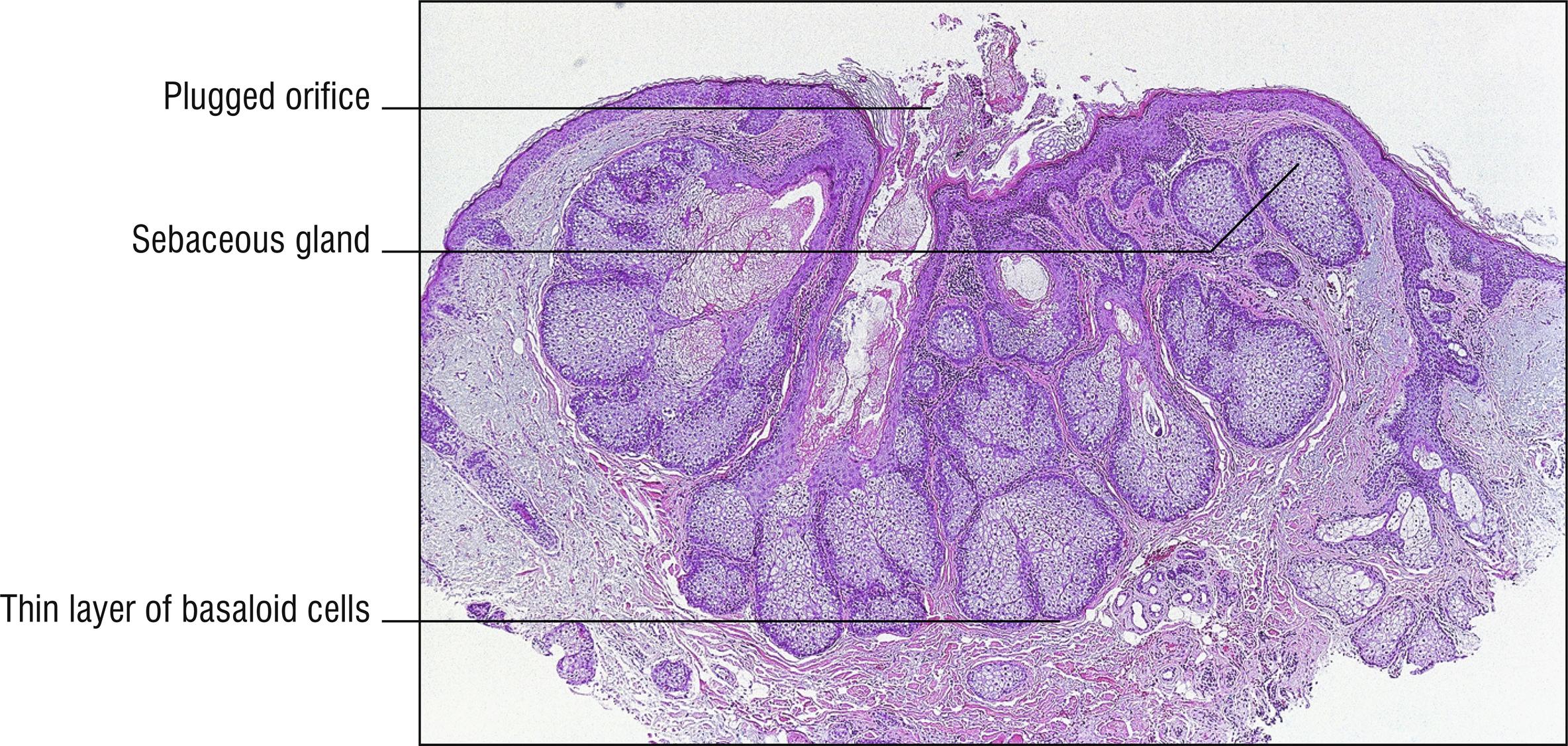Physical Address
304 North Cardinal St.
Dorchester Center, MA 02124
(see Fig. 21.1 )

Common whitish (1.150) to yellowish (1.151) papules, often with a rolled edge or central umbilication, most common on the face (1.145).
Enlarged, otherwise normal sebaceous gland, often with a large central orifice
Solar elastosis frequent
Fordyce spots: enlarged sebaceous glands of the lips (1.74) and rarely on other mucosal surfaces such as the vulva or glans penis.
Juxtaclavicular beaded lines: papular linear bands of enlarged pilosebaceous units on the neck and clavicle areas, more common with dark skin, may clinically resemble pseudoxanthoma elasticum (9.8), papular mucinosis (8.8), or acanthosis nigricans (18.5).
Montgomery’s tubercles: enlarged sebaceous glands of the nipples (1.90).
Folliculosebaceous cystic hamartoma (22.1).
Sebocrine adenoma (23.10).
Rhinophyma: enlarged nose related to sebaceous gland hyperplasia or acne rosacea (10.1).
Basal cell carcinoma (18.14), milium (19.1), syringoma (23.7), intradermal nevus (20.5), and fibrous papule (27.3) often resemble sebaceous hyperplasia clinically.
Nevus sebaceus (21.2): onset at birth or at childhood, growth at puberty, linear larger plaque, more papillomatosis, and apocrine glands.
Sebaceous adenoma (21.3).
Become a Clinical Tree membership for Full access and enjoy Unlimited articles
If you are a member. Log in here